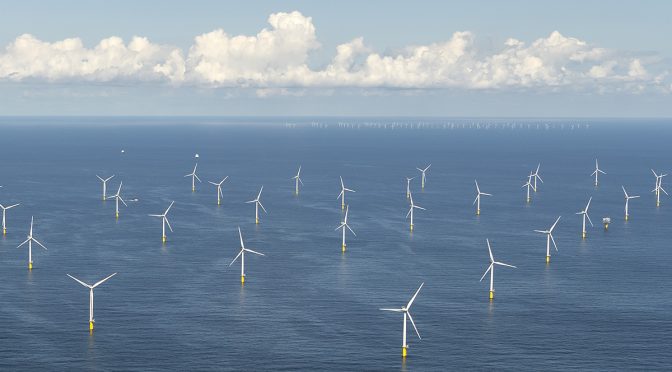GWEC and the India Offshore Wind Working Group welcomes the approval of the Viability Gap Funding (VGF) scheme for offshore wind energy projects in India.
GWEC met with the Ministry of New and Renewable Energy in 2022 and pressed for financial support mechanisms such as Viability Gap Funding in India. GWEC has continued to engage with the government at a series of events throughout the last year and detailed the benefits to the Indian market of financial support mechanisms in several of its key reports.
The Union Cabinet, chaired by HE Shri Narendra Modi Ji, Hon’ble Prime Minister of India, has now approved a total outlay of INR 7453 crore (~ USD 0.89 billion), including INR 6853 crore (~ 0.69 billion) for installation and commissioning of 1 GW of offshore wind energy projects (500 MW each off the coast of Gujarat and Tamil Nadu), and grant of INR 600 crore (~ USD 0.06 billion) for upgradation of two ports to meet logistics requirements for offshore wind energy projects.
GWEC’s Global Offshore Wind Report 2024 estimates 3% of the APAC’s offshore wind capacity between 2024-2033 to be rooted in India, which is also expected to gradually emerge as the ground for offshore wind manufacturing.
With one of the largest and most ambitious programs for harnessing renewable energy, India is at the forefront of the clean energy transition. At COP 26, India committed to adding 500 GW of non-fossil fuel capacity by 2030 and that 50% of its energy requirements shall be met by renewable energy.
India’s deepening and continued growth in power demand across all sectors of the economy and accelerated focus on a low-carbon future has fuelled efforts to harness offshore wind, which is also likely to support the country’s National Hydrogen Mission and other flagship endeavours for decarbonization and low carbon growth.
As per the National Institute of Wind Energy (NIWE) of the Government of India, the country has over 70 GW of technical potential for offshore wind off the coasts of Tamil Nadu and Gujarat. India’s “National Offshore Wind Energy Policy – 2015” provided the legal framework and the right impetus for the development of offshore wind.
Mr. Bhupinder Singh Bhalla (IAS), Secretary, Ministry of New and Renewable Energy, Government of India, said “The Government of India endeavours to facilitate an enabling environment for the offshore industry. The Union Cabinet’s approval for a viability gap funding scheme with a total outlay of INR 7453 crore (USD 90 million approx.) for the installation and commissioning of 1 GW of offshore wind projects including a grant of INR 600 crore (USD 7 million approx.) for upgradation of two ports would be significant support for the establishment of the necessary offshore ecosystem. This will lay a strong foundation for success in the 37 GW sea bed lease tender trajectory aimed at harnessing the offshore wind potential in the country. “
Mr. Girish Tanti, GWEC India Chair, and Vice Chairman of Suzlon, mentioned VGF approval as a milestone movement and said, “Under the leadership of HE Shri Narendra Modi Ji, Hon’ble Prime Minister of India, the country has deepened its feet in the wind energy sector and witnessed widespread growth in non-fossil fuel energy capacity addition. With offshore wind, the wind industry has a tremendous opportunity to help India’s NDCs while also building a robust value chain through investments, policy measures, and partnerships that increase jobs and environmental benefits. GWEC India looks forward to continuing our work with national and state governments to drive forward the deployment of offshore wind in India.”
Ms. Rebecca Williams, Chief Strategy Officer – Offshore Wind, GWEC, congratulated the MNRE and said: “GWEC is very pleased to see that the Viability Gap Funding has been approved by the cabinet. This moment sends an important signal about India’s commitment to progressing offshore wind at scale. GWEC’s 2024 Offshore Wind Report shows that offshore wind can accelerate just transition in the energy sector, playing an important role in sparking new jobs and investments in the sector. Facilitative measures taken by the Indian government, including the approval of VGF by the Union Cabinet, help build confidence that will enable offshore wind to graduate from the status of an emerging technology in India”.
Read the official news on VGF from the Government of India: pib.gov.in/PressReleaseIframePage.aspx?PRID=2026700


